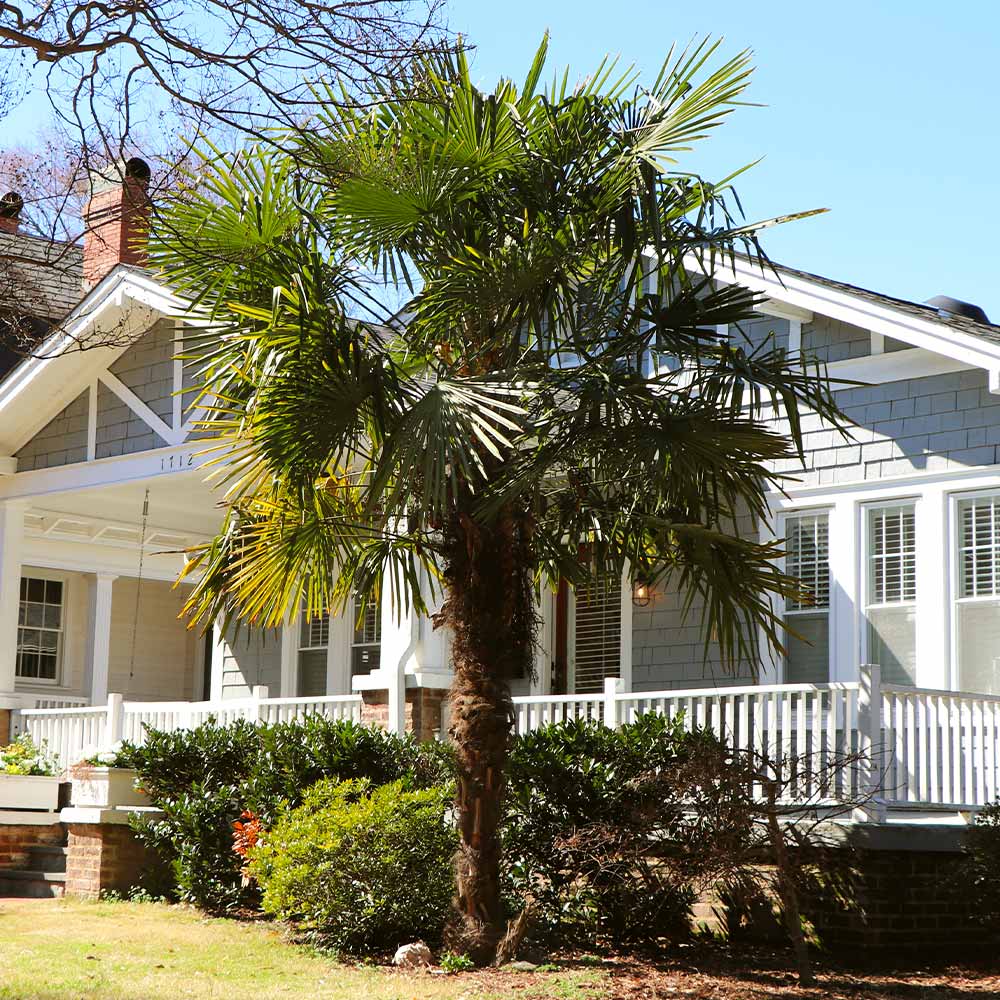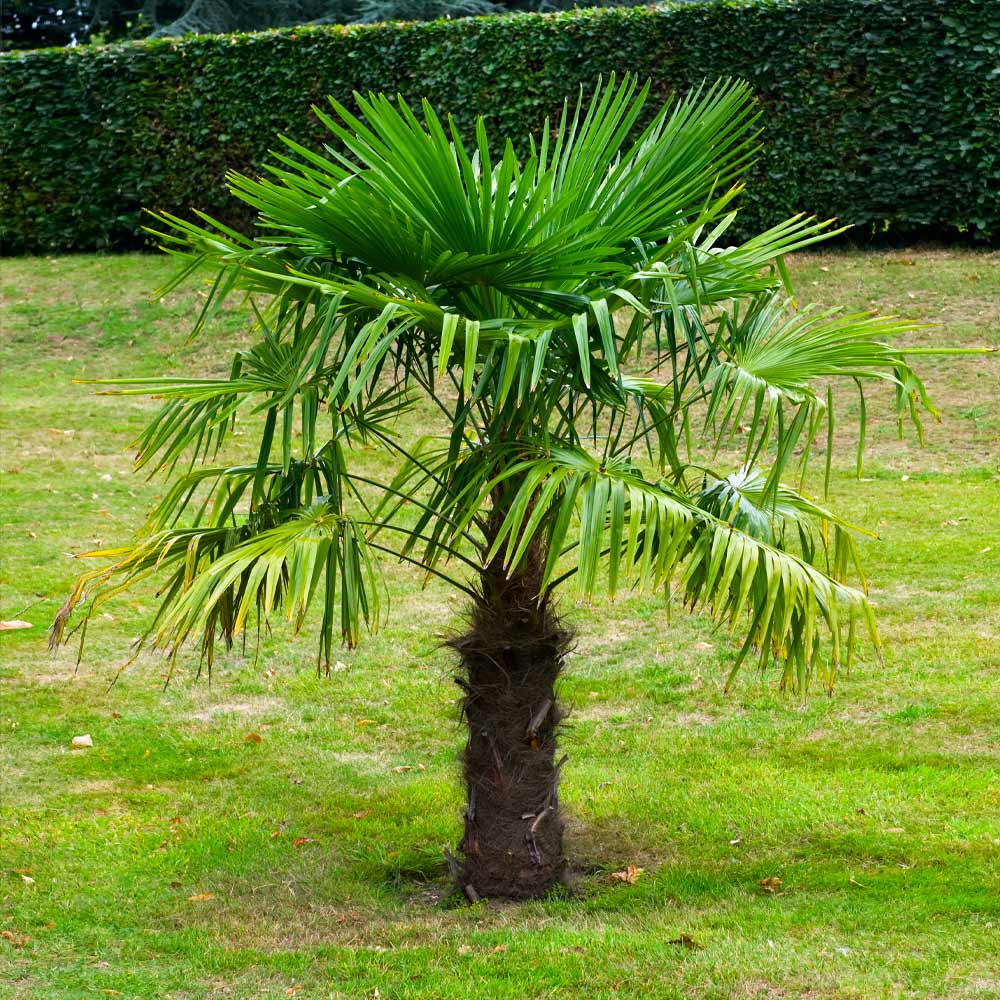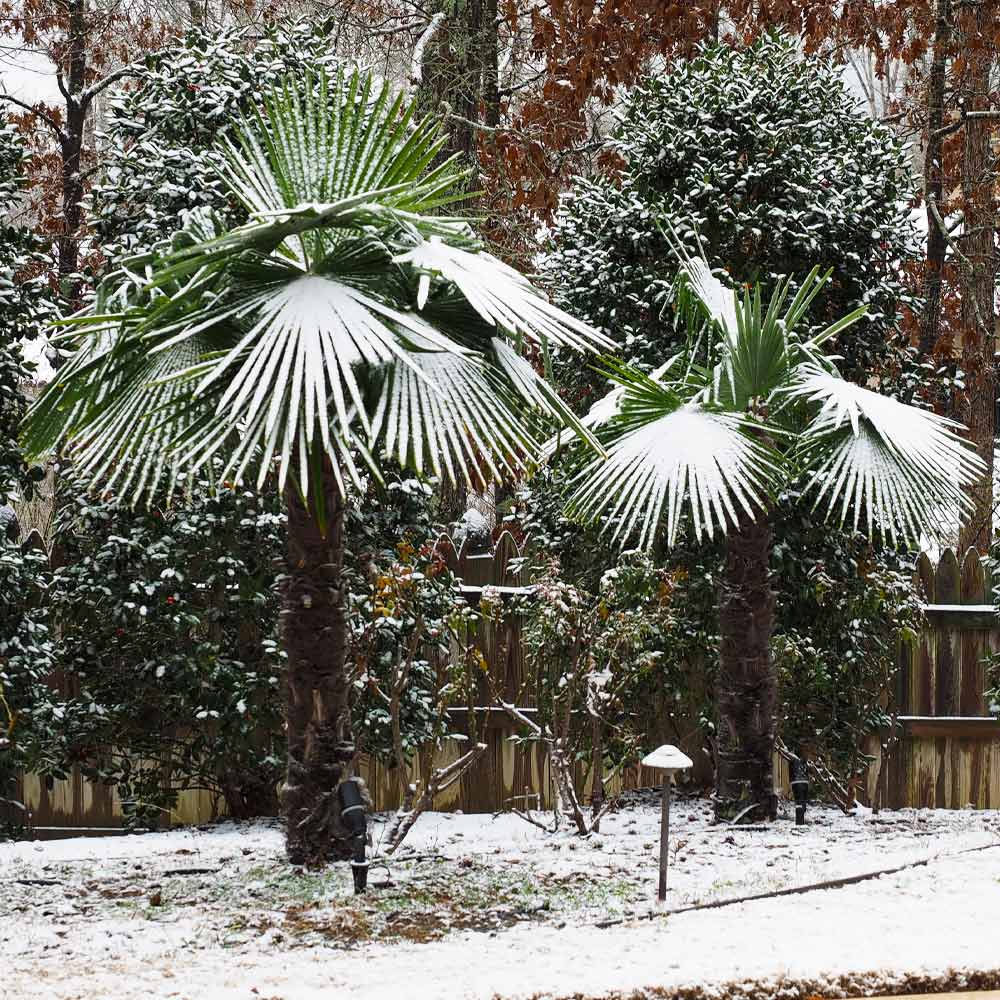The Best Cold Hardy Palm
Why Windmill Palm Trees?
Thanks to this fresh variety, the Palm isn't relegated to only tropical locales. Because the Windmill Palm is one of the most cold hardy palms available on the market today, it's a dream come true for those who want island-inspired good looks in colder climates.
Northern gardening climates, even in growing zone 7, are still able to grow this stunning island beauty. And not only is Windmill Palm cold tolerant, but it's also unbelievably low-maintenance and naturally pest resistant, too.
Plus, it's got the good looks to match its effortless ease. Magnificent in stature, the Windmill Palm has fresh, fan-like fronds that are arranged symmetrically in a bunched group. This forms a crown of stunning green foliage that grows atop the trunk and can grow 6 to 10 feet wide.
Why FastGrowingTrees.com is Better
For starters, it's versatile. A slow-growing species, the Windmill Palm is well-suited as an accent piece framing your deck, pool or driveway. And you can pot a Windmill Palm in a large container and grow it on a patio or front porch.
Furthermore, it's able to adapt to an array of soil types and is virtually debris-free, so it truly takes very little effort on your part for this tropical beauty to flourish. You get these benefits and more because we've planted, grown and shipped your Windmill Palm Tree with absolute care. We've done the hard work at the nursery so that you get a tried-and-true, well-rooted performer in your landscape.
Fundamentally easy and exotic, giving instant tropical appeal to any landscape: the Windmill Palm is considered best in class when it comes to landscape picks. The opportunities to use this gorgeous tree are endless, so order your very own Windmill Palm today!
Looking for more palm trees to add to your collection? Check out our guide to popular .
Planting & Care
1. Planting: You don't have to immediately repot your plant - you'll only need to repot approximately every other year, once your Palm outgrows its shipped container or original pot. Increase the pot size by 2 inches each time you repot to accommodate new growth. For the Windmill palm it can get quite large so if starting in a container make sure to eventually plan to plant inground.
If growing outdoors make sure you give the palm well-draining soil and adequate space above to grow.
2. Watering: Mist your Palm weekly if kept indoors in addition to regular watering – this ensures that its native humid climate is simulated in your home. If you're not sure when to water, simply check the soil about 2 inches down. If the soil is dry here, it's time to water.
FGT Tip: If fronds begin to yellow, it could be a sign of overwatering. If you see yellowed fronds, allow time for the soil to dry before watering your plant again. Browning fronds, however, mean that your Palm is not getting enough water and needs more. Using a well-draining potting mix is key in getting this balance.
3. Pruning: Simply any fronds as they turn yellow or brown. This improves the look of your plant and creates clean space for healthier green fronds to grow.
4. Fertilizing: You can apply palm fertilizers that contain specific nutrients best suited for palms. If you prefer, you can also use a balanced fertilizer, such as an 8-8-8 formula, for quicker growth in spring and summer.
FAQs
How tall do Windmill Palms get?
Windmill Palms grow to around 20-40 feet tall at maturity.
How hardy is a Windmill Palm?
Windmill Palms are considered very hardy for a palm and will thrive in Zones 7-10 or down to about -10 degrees Fahrenheit.
How do you take care of a Windmill Palm Tree?
Plant in a location with full to partial sunlight and in soil that drains well. Try to avoid over and under-watering, as this is the cause of most palm tree issues.









Comment